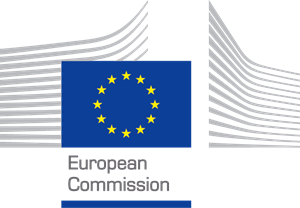A bioengineering approach for an efficient degradation and sequestration of pollutants.

Project BIOSYSMO: Bioremediation systems exploiting synergies for improved removal of mixed pollutants.
BIOSYSMO develops a computationally assisted framework for designing and optimizing synergistic biosystems combining the required pathways and traits to achieve the most efficient degradation and sequestration of pollutant mixtures. These biosystems comprise combinations of bacteria, fungi and plants containing the natural or engineered pathways required for pollutants degradation and identified based on a computationally assisted analysis.
BIOSYSMO takes advantage of the high natural microbial diversity by screening samples from polluted sites and locations affected by diffuse pollution to identify natural microorganisms already present and able to metabolize the target pollutants. The search is expanded to microorganisms previously identified and characterized by applying data mining tools to genomic and metagenomic data available in public repositories.
The construction and optimization of synergistic biosystems combine approaches based on 1) enhancing plant-microbe (bacteria, fungi) interactions to achieving combinations with improved pollutant uptake and/or degradation; 2) engineering bacteria, for improved degradation and bioaugmentation, and plants (poplar tree), for improved microbial colonization and pollutant uptake; 3) constructing artificial micro-structured consortia into aggregates and biofilms, containing all the required pathways for pollutant removal; and 4) applying bioelectrochemical systems (BES) as stand-alone or in hybrid systems.
The different key players are identified and combined to formulate innovative biosystems with the assistance of genome-scale metabolic (GEM) models for elucidating and simulating the key metabolic pathways. The constructed biosystems are applied in conventional (phytoremediation, biopile, bioaugmentation) and innovative (BES, hybrid BES-phytoremediation) bioremediation approaches optimized for the treatment of mixtures of pollutants in soil, sediments and water.
Our main tasks
-
- Project coordination
-
- Construction of an integrated cross-referenced database and identification of microorganisms and plants with pollutant biodegradation capabilities
-
- Constraint-based genome-scale models
-
- Development of process models of bioremediation strategies
-
- Microbial engineering for bioaugmentation of natural communities
-
- Roadmap for wider implementation of bioremediation strategies
-
- Environmental Risk Assessment
-
- Regulatory assessment
Partners
AXIA INNOVATION | BLUE SYNERGY | CIIMAR | CNRS CENTRE NATIONAL DE LA RECHERCHE SCIENTIFIQUE | COMMUNAUTE D' UNIVERSITES ET ETABLISSEMENTS UNIVERSITE BOURGOGNE - FRANCHE - COMTE | EXELISIS | ICCRAM UNIVERSIDAD DE BURGOS | IDENER.AI | INSTITUT JOZEF STEFAN | LEITAT | TAUW | UNIVERSITE DE FRANCHE-COMTE | UPM UNIVERSIDAD POLITECNICA DE MADRIDStart date – finish date
09 / 2022 - 08 / 2026

This project has received funding from the European Union’s Horizon 2020 research and innovation programme under grant agreement Nº 101060211

